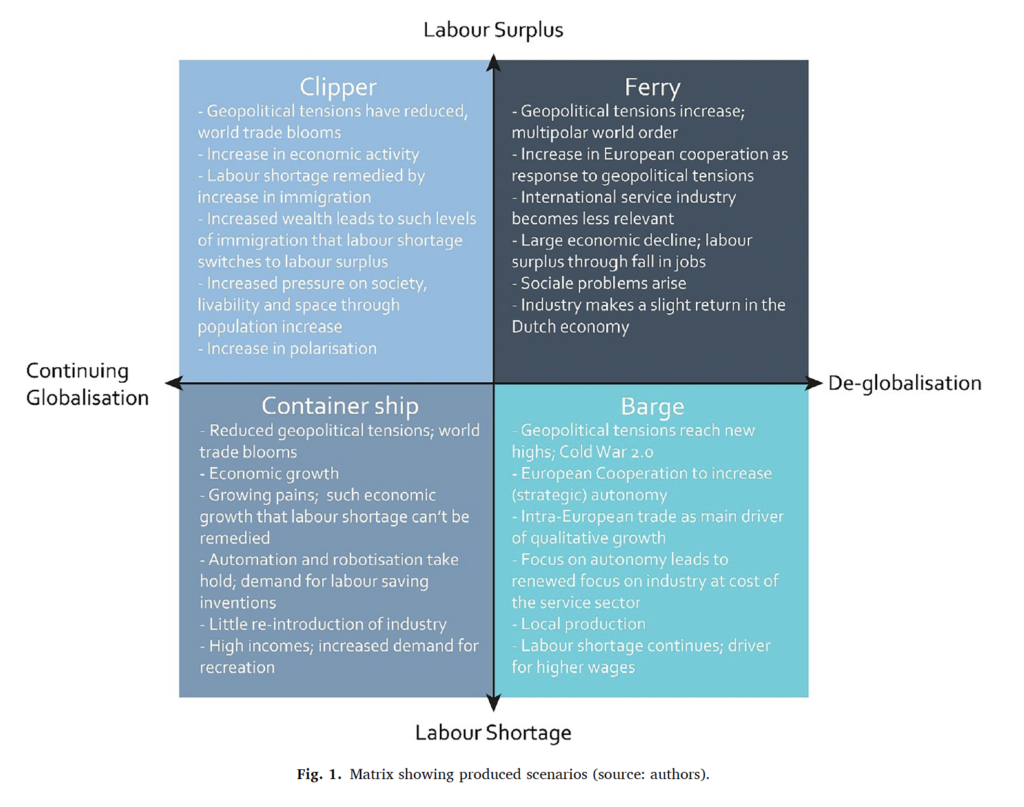The circular economy (CE) brings many opportunities but also many challenges for ports, cities, and their hinterland. The goal of a new paper is twofold. First, the researchers embrace the inherent uncertainty of the spatial impact of the CE on ports and cities. They employ scenario methodology to guide them in steering this uncertainty by developing four scenarios.
To explore the complexity of these four scenarios, they focus on the Dutch province of South Holland. This region hosts the port of Rotterdam, the largest port in Europe, and its direct hinterland consists of a densely urbanized region. As such, the four scenarios cannot only shed light on the future of the port but also how its relations with its direct urbanized hinterland can potentially change. In two scenarios, deglobalization occurs.

The consequences are that the port’s focus changes more to its direct hinterland instead of a global-oriented focus. On the other hand, the existing water-bound industrial areas in or nearby cities increase in importance, in contrast to the contemporary pressure to redevelop these into waterfront residential and commercial areas. In other words, port and city/region grow towards each other.
The second goal of the paper is to dive into the specific consequences of these scenarios for day-to-day planning practices. Combining microeconomic and AIS shipping data, they discovered the essential terminals and industrial areas for transitioning towards a CE in port, city, and hinterland.
